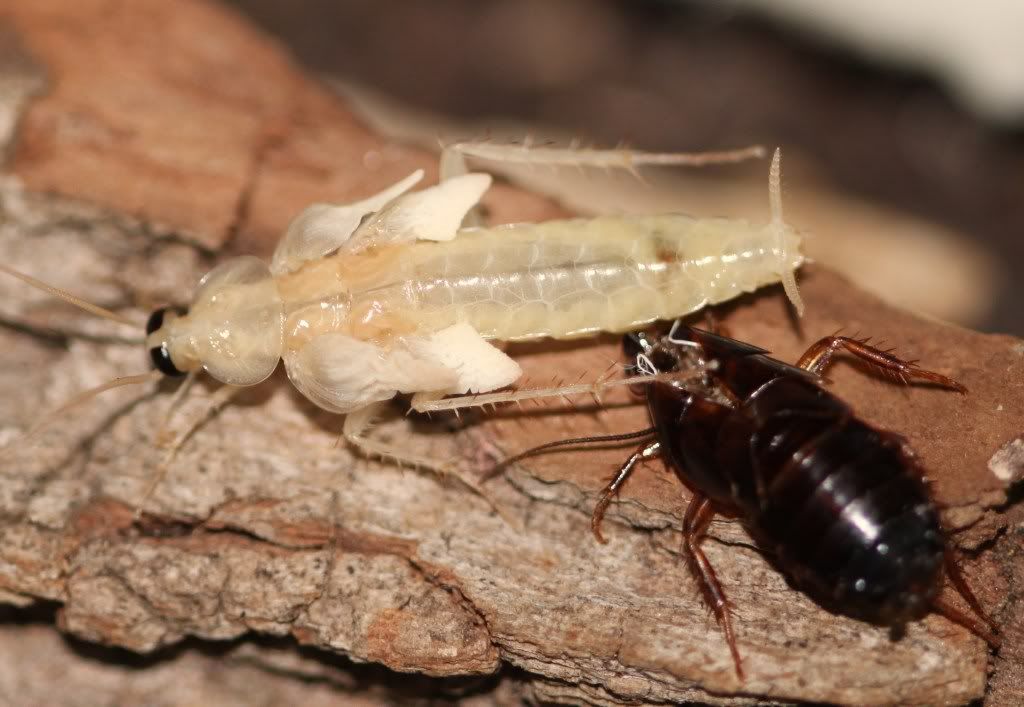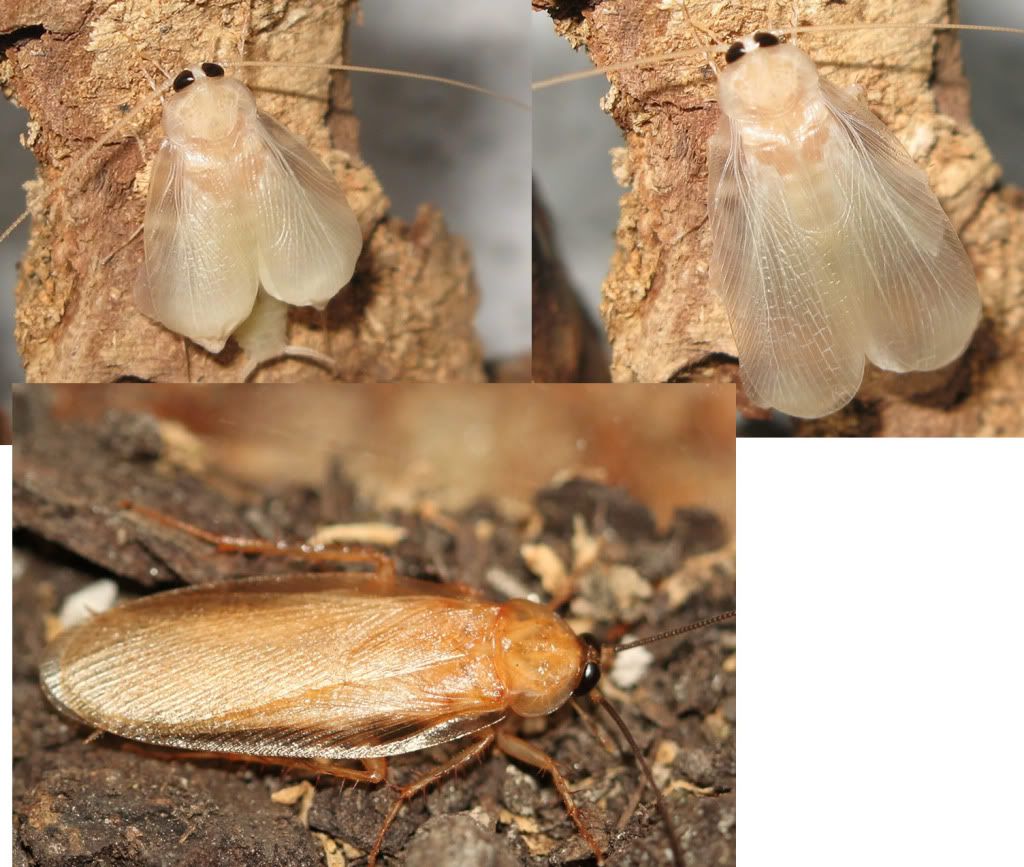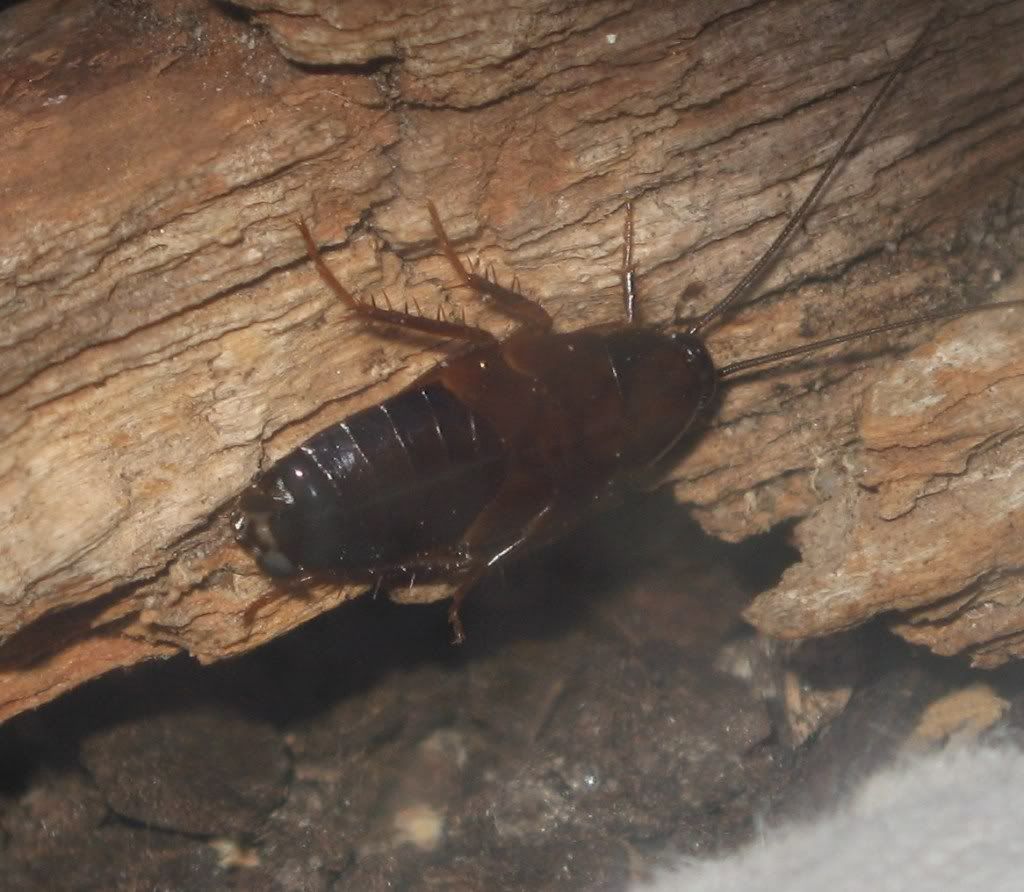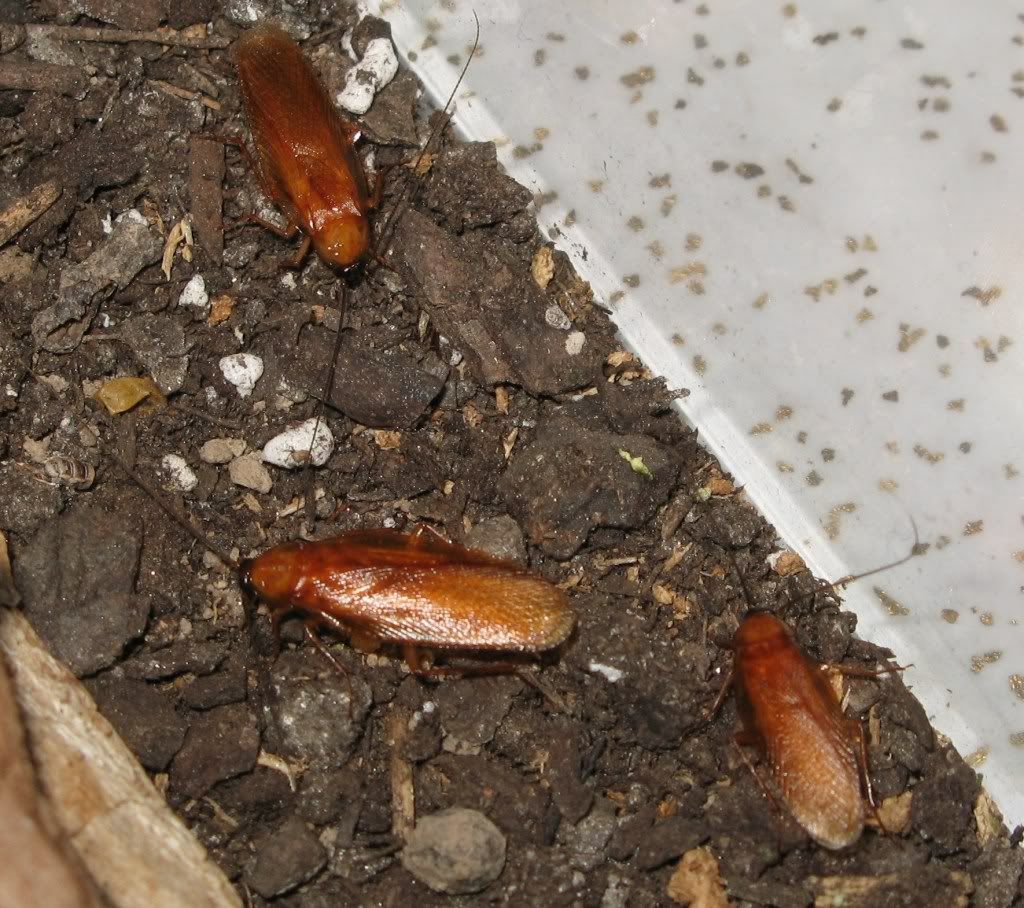Guest viewing is limited
- You have a limited number of page views remaining
- 6 guest views remaining
- Register now to remove this limitation
- Already a member? Click here to login
You are using an out of date browser. It may not display this or other websites correctly.
You should upgrade or use an alternative browser.
You should upgrade or use an alternative browser.
Parcoblatta molt
- Thread starter Vulgaris
- Start date
Vulgaris
Fifth Instar
Maybe virginica? That is just a guess though. They are from Pennsylvania
here is a link to other images of these guys as nymphs http://bugguide.net/node/view/347867
here is a link to other images of these guys as nymphs http://bugguide.net/node/view/347867
BugmanPrice
Twelfth Instar
If you can post a pic of a female when you get one that'd make ID really easy.Do you have any idea which species? ID'ing these guys is really complex.
BugmanPrice
Twelfth Instar
It's a nymph for sure. Probably going to adulthood next molt.
Vulgaris
Fifth Instar
Thought I would share this with you guys. You were right. That individual in question molted today (another male of course). They just look so alien when they molt.
so I have three adult males now. And I looked at the other three. They look like they still have one more molt until they become last instar nymphs, and then another molt after that to adulthood. This is not looking great for my chances of breeding them

so I have three adult males now. And I looked at the other three. They look like they still have one more molt until they become last instar nymphs, and then another molt after that to adulthood. This is not looking great for my chances of breeding them

Last edited by a moderator:
BugmanPrice
Twelfth Instar
Neato picture! You can see the heart under the dorsal surface and the tracheae. Reminds me of those models with the clear skin so you can check out the anatomy.
Ralph
Panchlora
The cooling is a common mantid technique too. I think 50's (F) would be appropriate, but even lower is very possible. The heart is the gray stripe along the center of the abdomen.Zephyr, thats sounds like a good idea. I might try it with one or two of them. What kind of temps are we talking? BugManPrice, I don't know much about roach anatomy. Where exactly is the heart? Is it that spot in the abdomen?
BugmanPrice
Twelfth Instar
A good question would be, when deciding the lower limit of temperature, is how they overwinter in their temperate climate. Maybe Orin or somebody would know whether they are inactive adults or ootheca that is surviving during the winter months.
It seems I read a paper where they were out collecting some sort of ‘roach (maybe Parcoblatta spp. or Ischnoptera deropeltiformis) as inactive adults during fall, but who knows what happens during winter…
It seems I read a paper where they were out collecting some sort of ‘roach (maybe Parcoblatta spp. or Ischnoptera deropeltiformis) as inactive adults during fall, but who knows what happens during winter…



